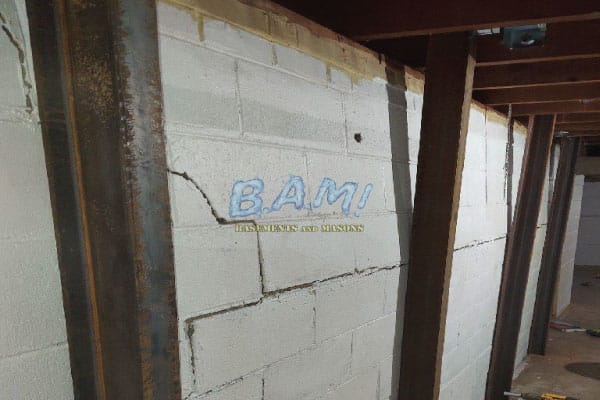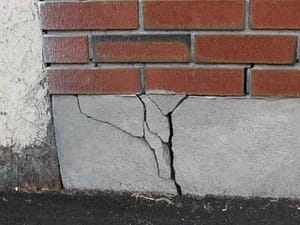Not known Incorrect Statements About Best Basement Waterproofing
Not known Incorrect Statements About Best Basement Waterproofing
Blog Article
Indicators on Best Basement Waterproofing You Should Know
Table of Contents6 Easy Facts About Best Basement Waterproofing ShownFacts About Best Basement Waterproofing UncoveredBest Basement Waterproofing Fundamentals ExplainedSome Known Details About Best Basement Waterproofing Little Known Questions About Best Basement Waterproofing.
What creates water damage problems in your basement? Pipelines that line the inside of your walls are simply one instance of where water damages can happen.The soil and ground of your home is really important. If there is way too much water surrounding your home, nonetheless, it can push the dirt right into your home and trigger the seals of your cellar to end up being endangered. Best Basement Waterproofing. when you see excess water in position where it should not be, that is an excellent indication that you have a trouble
Concrete waterproofing coverings are cement-like; when completely dry, they adhere completely to concrete and masonry wall surfaces. You apply the coating with a hefty brush made with bristles swirled throughout application for an appealing, ended up look. Nonetheless, concrete water resistant coverings can't be related to previously repainted surfaces Silicate-based concrete sealants, also recognized as densifiers, are likewise ideal just for walls that have not been repainted or sealed.
Because these are passing through sealants, they can't flake off or peel, and you can have paint applied over them. The American Eagle group might uncover much more challenging reasons for your moisture problems; there are extra options readily available. Plastic sheets and panels might be integrated with indoor basement drain systems. They don't stop water from making it through the wall, yet they do stop it from spoiling points in the basement.
3 Simple Techniques For Best Basement Waterproofing
A sump pump is required to relocate water out of your basement. In order to properly advise a service for your wet cellar, call American Eagle for a no-obligation check out. Our specialists will certainly have the ability to describe which options are options for your home. Why should you waterproof your cellar? Here are a couple of things the specialists can mount to aid the waterproofing procedure: this is created for the walls of your basement (Best Basement Waterproofing).

Basement waterproofing is an excellent means to obtain in advance of potential water damages that may come your way.
The Best Basement Waterproofing Ideas
When it pertains to securing your home, one of the most crucial steps you can take is cellar waterproofing. A completely dry cellar not just makes sure a risk-free and healthy environment for you and your family, but it additionally assists to stop expensive water damages and mold development. In this blog post, we will talk about the importance of cellar waterproofing, the benefits it gives, and just how you can go around protecting your room.
By purchasing basement waterproofing now, you can Going Here aid to guarantee that your home keeps its worth and attractiveness in time. Another advantage of cellar waterproofing is that it can aid to reduce your energy expenses. A wet cellar can contribute to greater levels of moisture in your home, which can make your a/c system work more difficult to keep a comfortable temperature level.
When it concerns cellar waterproofing, there are a number of methods that can be used to keep water out of your space. These consist of indoor sealants, exterior waterproofing membrane layers, and drainage systems. The very best method for your cellar will depend upon elements such as the level of water breach, the condition of your foundation, and your spending plan.
To conclude, cellar waterproofing is a critical step in securing your home from water damages, mold development, and various other issues. By spending in basement waterproofing, you can ensure that your area continues to be completely dry, safe, and healthy and balanced for you and your family. Not only does cellar waterproofing give tranquility of you can try these out mind and security for your home, yet it can also enhance its worth and save you cash on power costs in the lengthy run.
The Buzz on Best Basement Waterproofing
Inside sealants are a kind of cellar waterproofing approach that involves applying a sealant to the inside of the cellar wall surfaces and floorings. Water can seep right into a cellar via splits, voids, or porous concrete, especially in locations where there is high groundwater or inadequate water drainage. This can bring about water damage and mildew growth, in addition to damages to the structure and structural honesty of the structure.
The sealer produces a barrier that avoids water from leaking with the concrete. This approach is just reliable for small water this damages and does not deal with the underlying causes of the wetness. The primary source of the need for outside cellar waterproofing is water seepage from the beyond the structure wall surfaces.
It is a reliable remedy for protecting against water damages and preserving the structural honesty of the structure. It can be pricey and turbulent to set up, as it requires excavation around the structure and might involve landscape design and various other repair work once the waterproofing is total. This approach is the most trusted and long-lasting remedy for stopping water infiltration in the cellar.
Best Basement Waterproofing - An Overview

Report this page